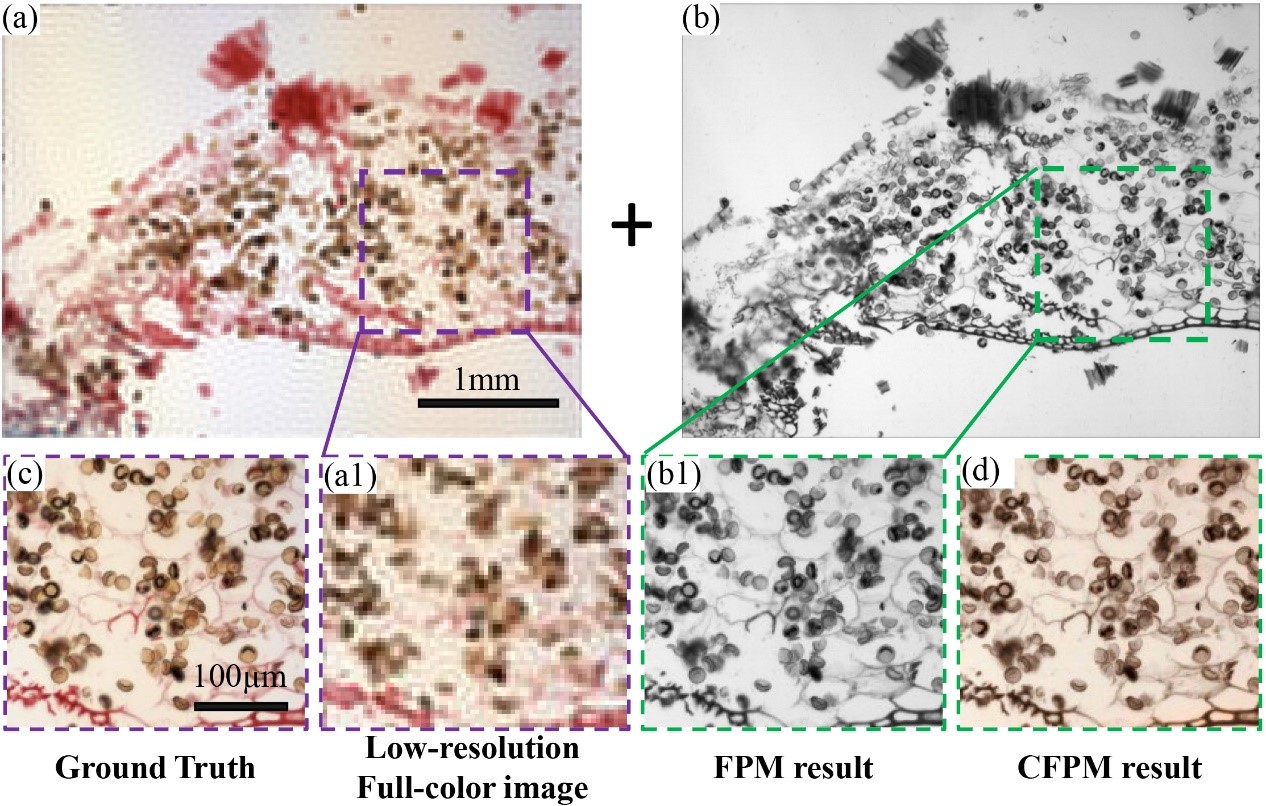Fourier ptychographic microscopy (FPM) is a promising computational imaging technique but the conventional full-color digital pathology based on FPM is still time-consuming.
Inspired by color matching, Assoc. Prof. PAN An, Prof. YAO Baoli, and Prof. MA Caiwen at Xi'an Institute of Optics and Precision Mechanics (XIOPM), Chinese Academy of Sciences (CAS) reported a colorization method via color transfer termed CFPM. The study was published in Science China-Physics Mechanics & Astronomy.
The reconstruction time of CFPM is significantly reduced by 2/3 with the sacrifice of precision of only 0.4%, which marks a great leap for the efficiency of FPM colorization compared with traditional methods. Also, CFPM can be regarded as an “unsupervised transfer learning” based on physical models without iterative optimization in contrast to traditional transfer learning.
There are two technical difficulties: one is how to ensure the authenticity of color and the correctness during displaying process; The other one is how to ensure the accuracy of color transfer while improving efficiency.
Therefore, the mapping relationship between CIE-XYZ color space and the display of different color spaces based on FPM is established; Different color transfer schemes are compared and the result shows that it is the best option to use low-resolution color images with the same field of view as donor images.
Speaking of the future application, Prof. An Pan, the corresponding author of the paper, said: “By transferring low-resolution true color texture information of optical microscopes to electronic microscopes, this method also enlightens us that we may dye true color for black-and-white images of an electronic microscope”.

Figure 1. Results of stained resting sporangia. (a, a1) LR donor image with the entire FOV of a 4× / 0.1NA objective and its close-up. (b, b1) FPM recovery image under green channel (515.0 nm) and its close-up. (c) Ground truth captured by a 10× / 0.3NA objective. (d) Staining results via CFPM. (Image by XIOPM)
Download: